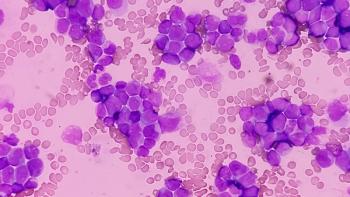
Study Shows Niraparib Extends Time Without Symptoms, Toxicity in Ovarian Cancer

A new study shows promising results for niraparib in the treatment of patients with ovarian cancer.
Treatment with niraparib (Zejula) improved survival and extended the time without symptoms or toxicity among patients with recurrent ovarian cancer, according to study results published in the Journal of Clinical Oncology.
The time without symptoms or toxicity, or TWiST, was even more pronounced for the patients with BRCA gene mutations — though the effects were shown in both groups, according to the study.
“Patients who were treated with niraparib compared with routine surveillance experienced increasing mean TWiST,” the investigators wrote. “Thus, patients who were treated with niraparib in the ENGOT-OV16/NOVA trial experienced more time without symptoms or symptomatic toxicities compared with controls.”
In total, 553 patients with recurrent ovarian cancer were observed in the phase III ENGOT-OV16/NOVA trial.
For those with a BRCA gene mutation, 138 received niraparib and 65 underwent routine surveillance; and for patients with non-BRCA disease, 234 were given the drug, while 116 were on routine surveillance.
In the BRCA-mutant and non-BRCA-mutand cohorts, niraparib treatment resulted in a mean progression-free survival benefit of 3.23 years and 1.44 years, respectively, and a mean time with toxicity of 0.28 years and 0.10 years, respectively, compared with routine surveillance.
Niraparib is an inhibitor of the PARP1 and PARP2 enzymes and was approved by the FDA in 2017 for “maintenance” treatment for recurrent epithelial ovarian, fallopian tube, and primary peritoneal cancers. The sponsor, Tesaro, Inc., indicates on ClinicalTrials.gov that the estimated study completion date is June 2020.
For the toughest and most recurrent ovarian cancers which keep coming back, the investigators concluded that niraparib is effective and needs to be considered for future standards of care. The current practice means more rounds of chemotherapy, which means decreased quality of life while producing diminishing results; however, niraparib shows that PARP inhibitors could be a serious improvement on current standards of care.
“TWiST estimates from ENGOT-OV16/NOBVA indicate that niraparib-treated patients experienced increased mean TWiST compared with patients receiving (routine surveillance),” they write. “Therefore, patients receiving niraparib compared with control in ENGOT-OV16/NOVA experienced more time without symptoms or symptomatic toxicities and thus have the potential to experience longer undiminished (quality of life).”
Ursula Matulonis, M.D., the chief of the Division of Gynecologic Oncology at the Dana-Farber Cancer Institute, said in a statement that the new evidence shows there is an additional option for treatment in some of the toughest cases.
“When patients with recurrent ovarian cancer enter remission following platinum-based treatment, they now have the option to extend their progression-free survival with a PARP inhibitor,” said Matulonis.
For more on Ovarian Cancer, read on
Newsletter
Knowledge is power. Don’t miss the most recent breakthroughs in cancer care.
















































































